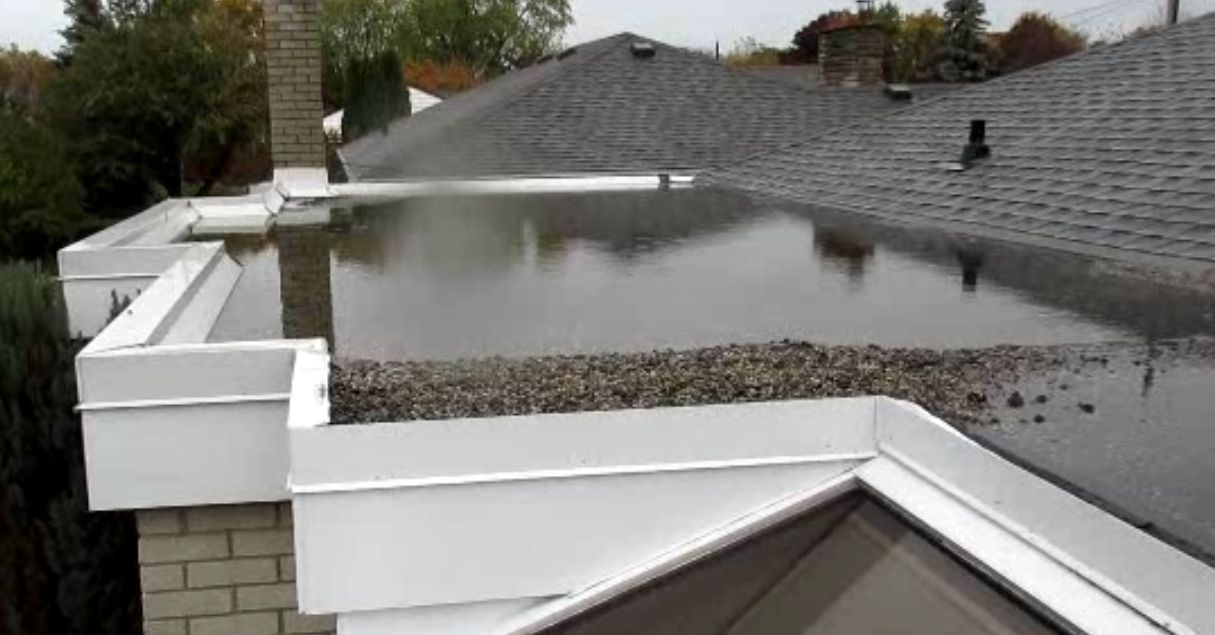
21 Nov Key aspects of flat roof repair
Flat roofs are sometimes vulnerable to damage due to their shape. However, in many cases they can be repaired, saving you the hassle and expense of having a completely new roof installed. Here we take a look at the common problems different types of flat roof can suffer from, and the methods used to repair them.
When can a flat roof be repaired?
It is not worth replacing a flat roof if it has any of the following problems:
- The entire surface has deteriorated with age
- It has multiple leaks
- It is bowing or buckling between the joists
- The joists themselves are rotten
In all these instances, it is far safer and ultimately more cost-effective to have a brand-new roof installed.
However, if the damage to the roof is more minor in nature, such as a small leak isolated to one area, it is possible to save yourself money by having your flat roof repaired rather than replaced. The methods used to repair the roof will depend on the type of damage and the material the roof is made of.
Here are some of the key aspects involved in repairing the most common types of flat roof.
- Felt roof
Felt is probably the most common material used for flat roofing, particularly on older properties. It suffers from a number of frequently-seen problems, including puncture holes, cracking, dips in the surface, and flashings leaking into the walls of the building.
If a felt roof has a small, localised problem on its surface, it can be repaired if the rest of the felt is in good order, by torching on a new patch or layer of roofing felt on top of the original.
Leaking flashings, however, are usually repaired by removing the old mortar and repointing. This takes skill, as it is essential not to damage the roof while carrying out this job.
- Mastic asphalt roof
Asphalt flat roofs are known for their longevity and durability, which is why they are expensive. However, they can tend to suffer from cracks and blisters as they get older. These problems can usually be repaired fairly easily, either by torching on a patch or full layer of roofing felt, or by applying a professional liquid roofing repair solution.
- EPDM rubber roof
One of the main advantages of EPDM roofing is that it is relatively easy to repair, although an approved rubber roofing product should always be used. Shrinkage is a common problem on rubber roofs which have not been installed properly, and they can also sometimes develop small holes as a result of being punctured by sharp debris.
A rubber roof can be patched using a self-adhesive rubber tape. The area must be thoroughly cleaned and coated with EPDM primer before the patch is applied. It can then be sealed as an extra precaution to ensure the repair lasts as long as possible.
- Fibreglass roof
Fibreglass is a popular choice for flat roofs, as it looks attractive and generally lasts for many years. However, it can sometimes suffer from splits, especially if it has been used to cover a very large area.
Fibreglass flat roofs are not particularly complicated for an experienced roofer to repair. The area must first be cleaned thoroughly with acetone and sanded down with a coarse sandpaper. Resin is then applied, and chopped strand matting is laminated into place over the damaged area. Once this has dried, the area is painted with a topcoat so its colour matches the rest of the roof.
Who can repair a flat roof?
Roof repair of any kind is a complex job which requires specialist skills. It should not be attempted by anyone without experience, as working at heights can be highly dangerous if you are not sure what you are doing. As repairing roofs also involves working with industrial chemicals, this is a job always best left to an experienced professional roofing firm.
If your flat roof is in need of repairs, Roundhay Roofing is happy to carry out an inspection. We will then be able to advise you whether your roof can be repaired or whether it would be cheaper and safer for you to have a new flat roof installed. Please contact us if you would like to find out more about the services we offer.

Sorry, the comment form is closed at this time.